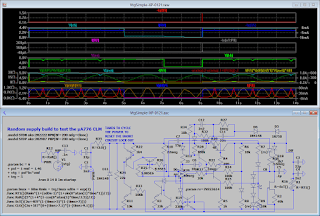the ?? std. ?? VCO from LM139 d/s does not perform too good nor stable.fnOf(control voltage)
so needed to retail one for 3.3V ...
... in prior of what picking the Op Amp model capable for this task was essential
. . . & the result ordered by relative change in frequency ::
In "practice" the controls eat off much like half the power -- e.g. -- the LED-s need to be multiplied by the factor of 10x to get the normal efficiency out of it --or-- the controls need to be replaced by the lower power ones . . . a tricky part . . . also (in case of increasing the number of LED-s) it requires more battery power so the step up conversion is a better approach (and more efficient and easier to control by default)
[Eop]
so needed to retail one for 3.3V ...
... in prior of what picking the Op Amp model capable for this task was essential
. . . & the result ordered by relative change in frequency ::
In "practice" the controls eat off much like half the power -- e.g. -- the LED-s need to be multiplied by the factor of 10x to get the normal efficiency out of it --or-- the controls need to be replaced by the lower power ones . . . a tricky part . . . also (in case of increasing the number of LED-s) it requires more battery power so the step up conversion is a better approach (and more efficient and easier to control by default)
[Eop]





































